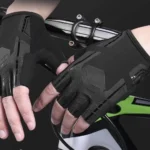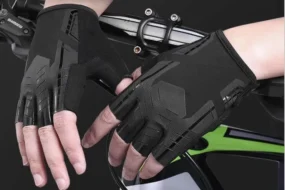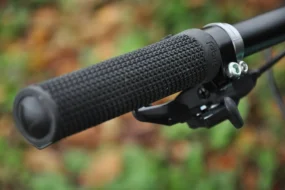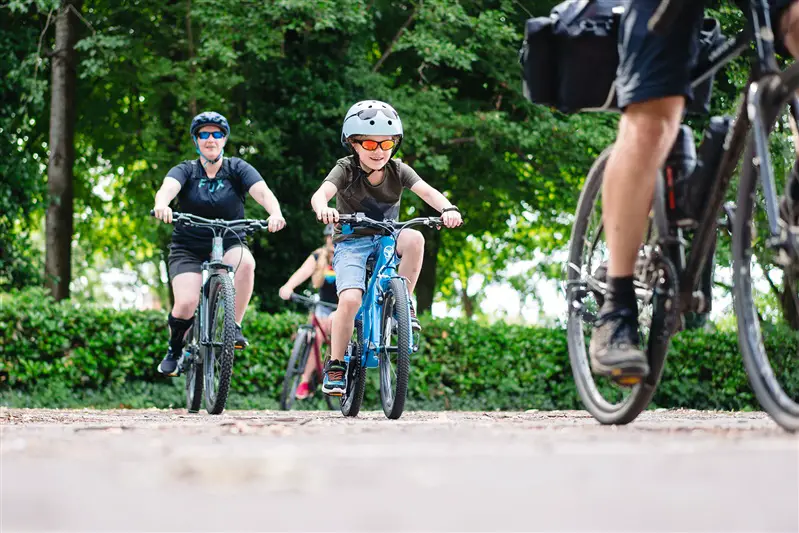
Balancing on a bike is crucial to becoming a confident and skilled cyclist. It’s not something that you can acquire overnight. To improve your balance on a bike, you must practice and put in the effort.
First, practice riding in a straight line. This will help you get comfortable with the sensation of balancing on two wheels. As you improve, try turning left and right. This will help you develop the skills you need to navigate through different terrains.
In addition, balance exercises can also be beneficial. They can help you build the muscle memory and strength you need to maintain your balance.
To fully enjoy biking, you must be comfortable with your balance. With practice, effort, and dedication, you can develop the balance skills necessary to become a skilled cyclist. So, don’t give up, keep practicing and soon you’ll be able to balance better on your bike.
What Makes Maintaining Balance Critical in Cycling

Cycling is a fun and healthy activity, but it requires a good balance to fully enjoy it. A good balance allows you to handle your bike more effectively and adapt to different environments.
When you are biking on challenging road surfaces, a good balance can help you navigate through them without falling off. Your balance is determined by how well your body is coordinated and how you carry yourself.
To improve your balance, you need to practice and train. However, there are also external factors that can help enhance your balance. Some of these include:
1. Seat height
The way your bike is constructed and the height of the seat directly impact your balance on the bike. To ensure optimal balance, make sure that your seat is at a comfortable height. This means that your knees should be able to fully extend when the pedals are at the lowest point.
When riding an adult bike, it is important to be comfortable and able to move both your legs and arms confidently. This will make it easy to access the pedals and handlebar.
To properly adjust the seat height, stand next to the bike and raise the seat until it is three to four fingers below hip level. If this is not comfortable, make adjustments gradually.
2. Handlebar height
In addition to the seat, the handlebar position also affects a cyclist’s balance. It’s important to adjust the handlebar to a height that is comfortable for you.
This means that you can keep your back straight, with relaxed arms and shoulders, without feeling any tension. This also helps to maintain proper posture while biking, reducing fatigue in your shoulders and back, and allowing you to focus on your balance.
3. Seat angle
The angle of your bike seat can also affect your balance. The wrong angle can make you uncomfortable and can cause you to slide forward when seated on the bike. This puts additional pressure on your arms and back, making the ride more difficult.
This can make it hard for you to maintain balance and make the ride uncomfortable. To avoid this, make sure that the seat angle is parallel to the ground. The seat should not be too far back, as it can also cause strain on your back.
Now that you have adjusted your seat and handlebar to a comfortable position, it’s time to focus on developing your balance. Here are some essential tips to help you improve:
- Start by practicing riding in a straight line.
- Learn how to turn left and right.
- Incorporate balance exercises into your practice routine.
- Believe in yourself and be confident.
Finding Your Balance
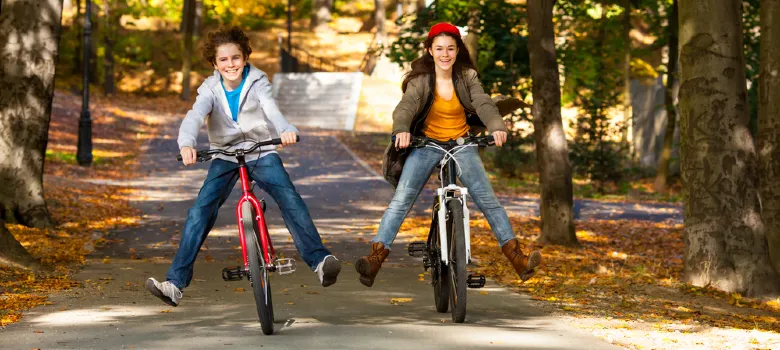
1. Start practicing on a straight line
Finding your balance on a bike is not easy, especially for beginners. It’s important to take things slowly and build your confidence before tackling more challenging rides.
One way to build confidence is by starting with a straight line. Familiarize yourself with how to navigate your bike and ensure that the bike is at the right height for you to still touch the ground with your feet.
Find a flat and straight surface to practice on, and gradually increase your speed as you lengthen your distance. Riding in a straight line can help improve your balance and build confidence at the same time.
It’s also important to keep in mind that fear of getting hurt can be a big obstacle when learning to ride a bike. It’s important to take the time to build your confidence and reduce the fear of getting hurt.
2. Learn how to turn left and right
Now that you have mastered riding in a straight line, it’s time to take your skills to the next level by learning how to turn left and right without losing your balance.
Once you have established your balance while pedaling, you can gradually turn the handlebar to the left or right direction. Make sure to do it slowly in order not to lose your stability and balance.
You can start by practicing small turns and gradually increasing the angle as you get more comfortable. It’s also helpful to prepare one foot to touch the ground in case you lose your balance. This way, you can avoid collapsing and regain your balance quickly.
Remember, practice makes perfect. Keep on practicing and you will soon be able to turn left and right smoothly and with ease.
3. Practice balance exercises
In addition to practicing straight line and turns, balance exercises can also help you improve your overall biking skills. These exercises will not only improve your coordination, but also boost your confidence when controlling your bike.
- Single leg squats: These exercises help to strengthen your leg muscles, making it more comfortable to sit on a bike. It will also help to improve your endurance when pedaling. This exercise also targets your glutes muscles.
- Plank with leg lift: This exercise is another great way to strengthen your leg muscles. Start by getting into a plank position and lifting one leg at a time. Planking is also a great way to strengthen your core muscles in both arms and legs.
- Use of a wobble board: Wobble boards can be a great tool to help improve your balance. You can try different balance exercises on the wobble board, such as the single-leg aeroplane exercise.
- Use of gym ball: Using a gym ball can be a great way to improve your balance on a bike. Since gym balls are naturally unstable, using it can help you control your body and maintain balance.
4. Be confident
It is important to remind yourself that falling off a bike is normal, especially when you are still learning. Do not be discouraged, instead, get back on and try again. As you continue to practice, you will notice that you are becoming more confident and comfortable with riding your bike.
To Sum Up
Remember, the key to success when learning how to balance on a bike is to take things slow and steady. Start by practicing on a straight line, and gradually work your way up to more advanced techniques like turning left and right.
Additionally, don’t forget to incorporate balance exercises into your routine, as these can greatly enhance your ability to control your bike. And lastly, have confidence in yourself and trust that you can do it. With time and practice, you’ll be able to ride your bike like a pro.
Read Also: Review of the Ozone 500 Ultra Shock 26″ Bicycle



